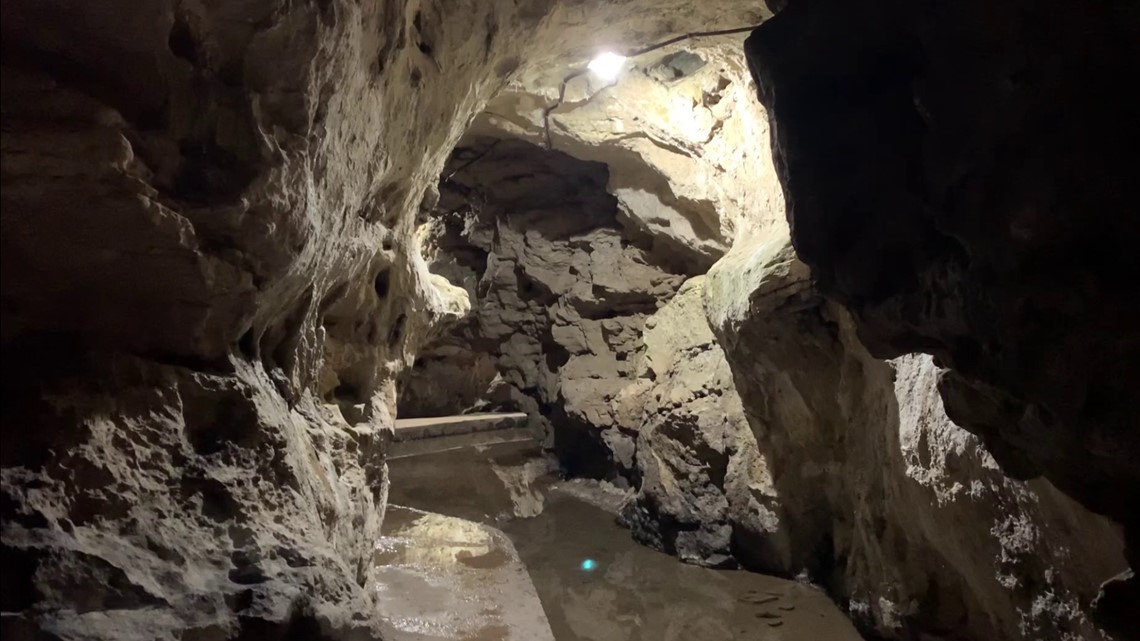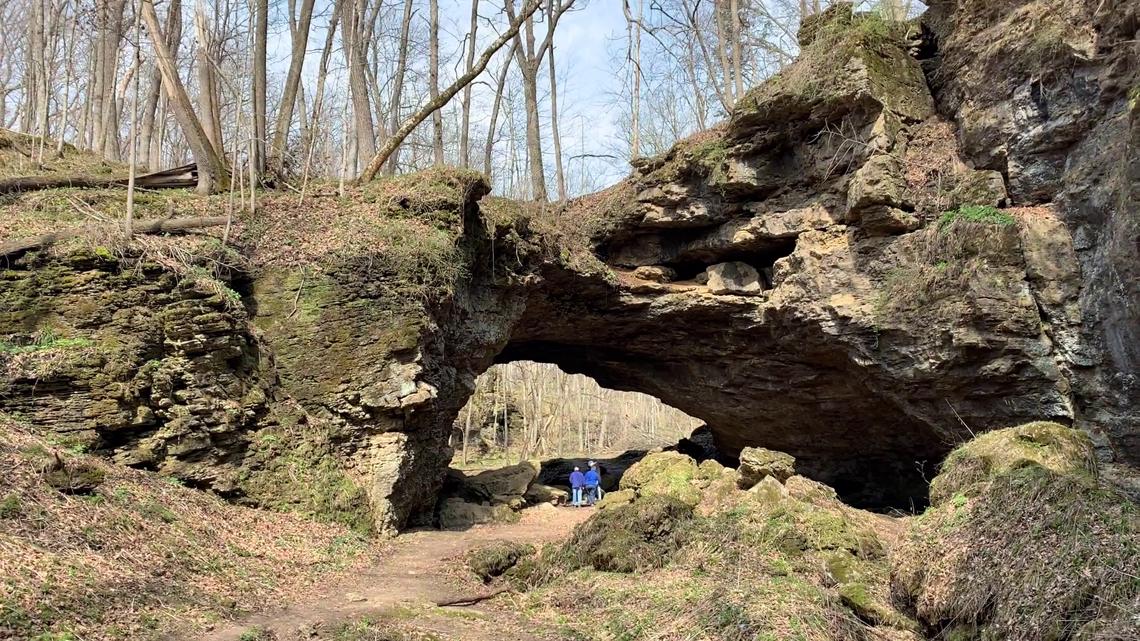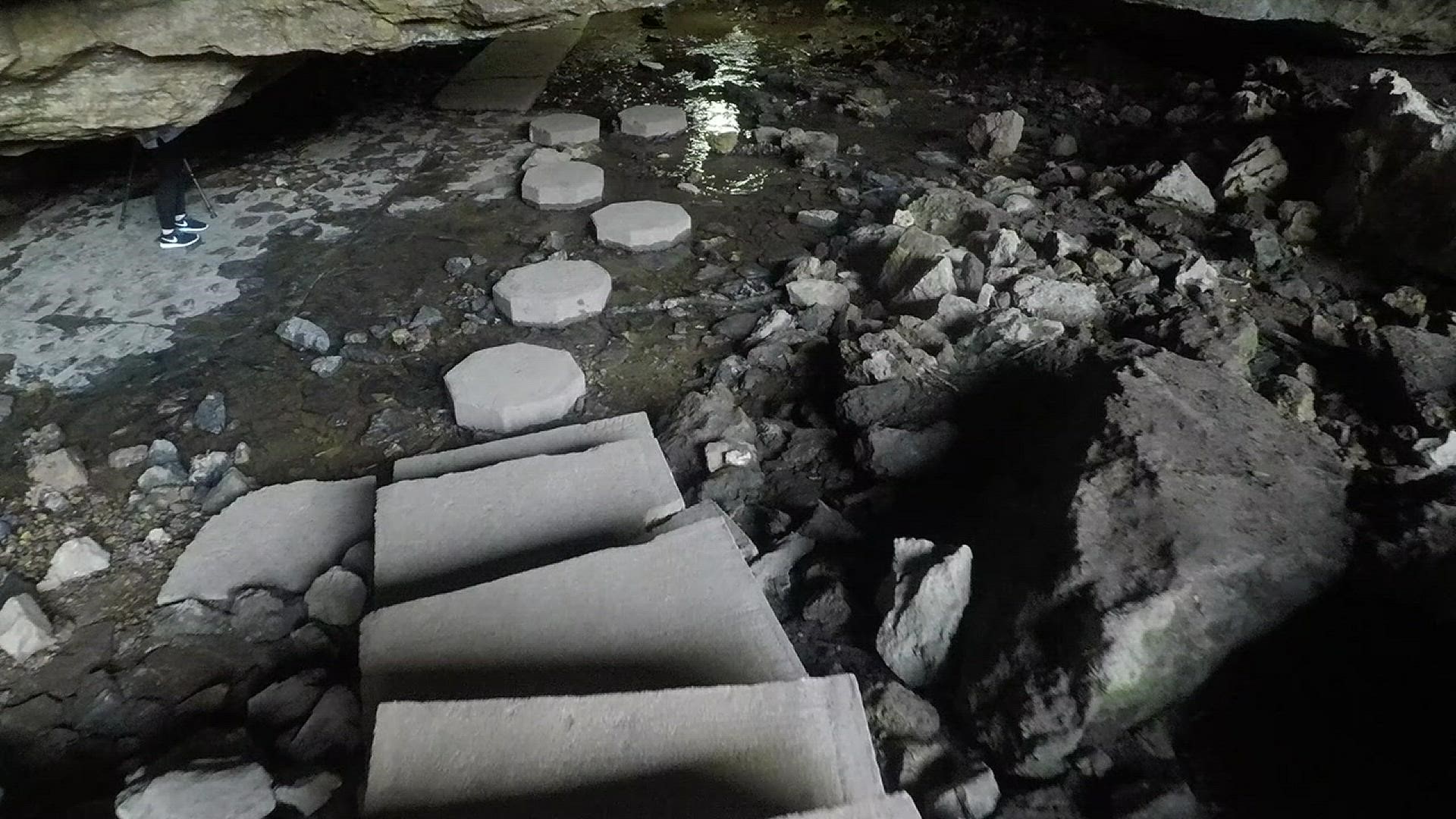MAQUOKETA, Iowa — Just under an hour north of the Quad Cities is the town of Maquoketa, Iowa. While it may appear small and unexpecting at first glance, Maquoketa is home to one of the most impressive and unique cave systems in the entire state.
What's now known as Maquoketa Caves State Park was discovered in the early 1800s by two men out hunting, State Park Technician Ryland Richards said. After shooting a deer, they saw it run into an opening in the rock and decided to set up camp and wait for it to come out on its own.
"They went through the night, and they woke up in the morning and walked to find their deer and realized that the deer had gone all the way through and out the other side," Richards said.
Even now, it's pretty easy to miss the caves from the roadway when driving through the park.
“You can drive right by and not even notice that there’s a massive, huge cliff face that leads into a 1,100-foot-long cave,” Richards said.
For over 100 years, the caves were privately owned and referred to as the Moorhead Caves. Under private ownership, it was easy for people to come out, walk through the caves and break off stalactites and stalagmites as souvenirs from their trip.
When it became a state park in October 1933, the caves and property were placed under government protection, but there was already a lot of damage done due to vandalism.
"All the (stalactites and stalagmites) we have now in the caves are about an inch long, and they take 100 years to grow one inch," Richards said. "So in our lives, we'll never see them be really tall again."
Today, the park ranks among the top underground exploration destinations in Iowa. Worldwide travelers are drawn to its 16 caves, scenic landscapes, recreational facilities and hiking trails that link the park altogether.


The main cave attractions in the park are the Dancehall, Rainy Day and Ice Caves. Each of the three is lighted and has sidewalks to walk through.
Some of the below-ground tunnels are a little more challenging, require crawling to get through the tight spaces and are more optimal for experienced cavers, such as Dug Out Cave. For those caves, a helmet and gear are required.


Other iconic features of the park include the 50-foot-tall Natural Bridge rock formation over Racoon Creek, the 17-ton Balanced Rock and a children's playground nestled between the campground and picnic areas.
Each year, the park sees about 300,000 visitors of varying abilities, from beginners to expert cavers, Richards said. Although the park is open year-round, the caves are only open to the public from April to October before closing every year for bat hibernation.
Want to pay the caves a visit?
Richards recommended coming on Mondays through Thursdays to avoid the crowds. From 11 a.m. to 4 p.m. on Fridays, Saturdays and Sundays are the busiest times at the park, and it can average up to 3,000 visitors per day on weekends.
“If you come between that time, we only have limited parking spaces,” Richards said. “So, if you show up and we have no openings, you’ll have to go do something for two hours and then come back again.”
For those hoping to stay for more than a day trip, there are 29 reservable campsites located within park grounds. Reservations are required for the campsites, 17 of which have electrical hookups, and they must be made by 9 p.m. on the day of arrival.

